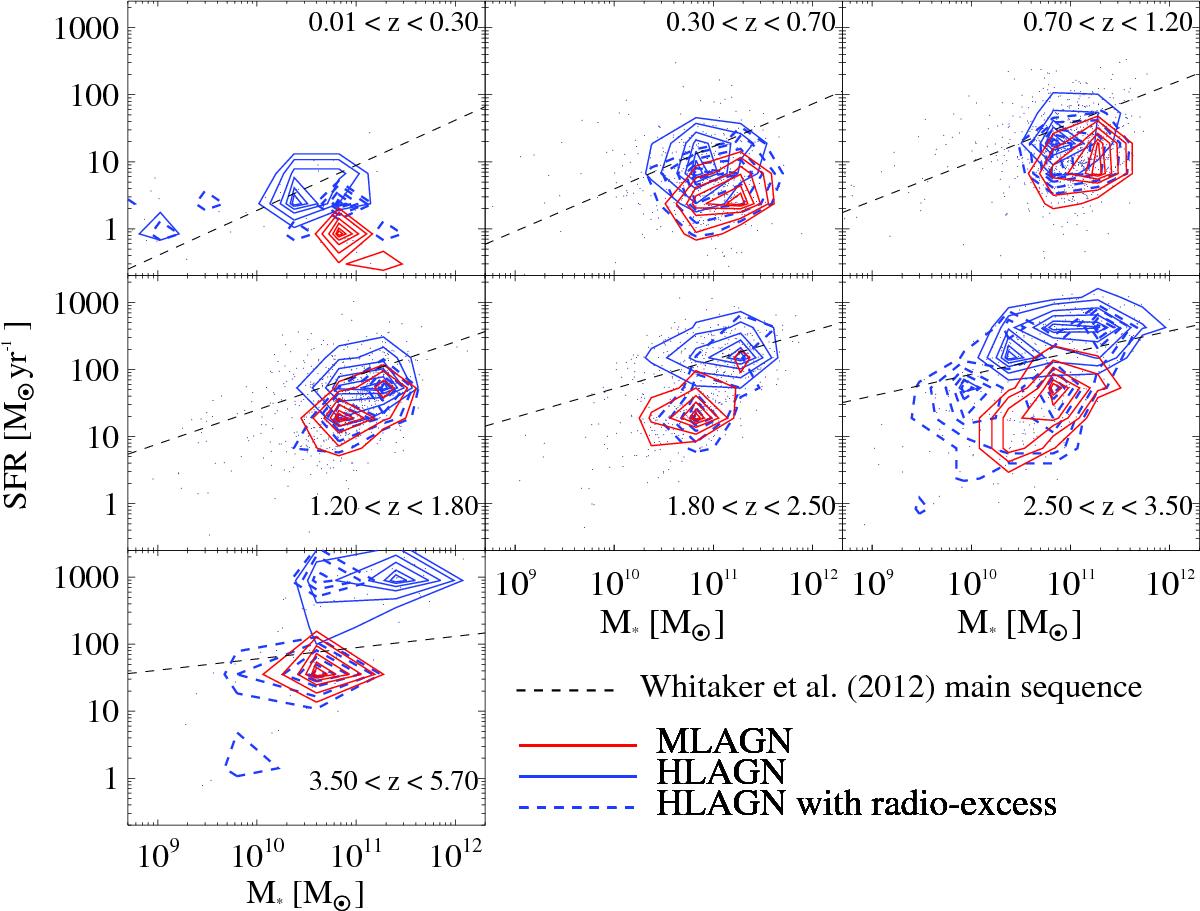Fig. 7

Distribution of HLAGN and MLAGN in the SFR–M⋆ plane as a function of redshift (black dots). The 2D density contours highlight the distribution of MLAGN (red), HLAGN (blue), and the subsample of HLAGN with radio excess (blue dashed contours), respectively. The 2D density contours enclose the sources (from outer to inner contours) with density levels >35, >50, >68, >80, >90, and >95% of the maximum 2D density. The black dotted lines indicate the MS relation (Whitaker et al. 2012) at different redshifts. The highest redshift bin contains only a few tens of sources, which explains the noise seen in the 2D density contours.
Current usage metrics show cumulative count of Article Views (full-text article views including HTML views, PDF and ePub downloads, according to the available data) and Abstracts Views on Vision4Press platform.
Data correspond to usage on the plateform after 2015. The current usage metrics is available 48-96 hours after online publication and is updated daily on week days.
Initial download of the metrics may take a while.


